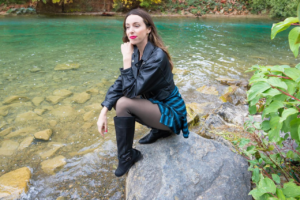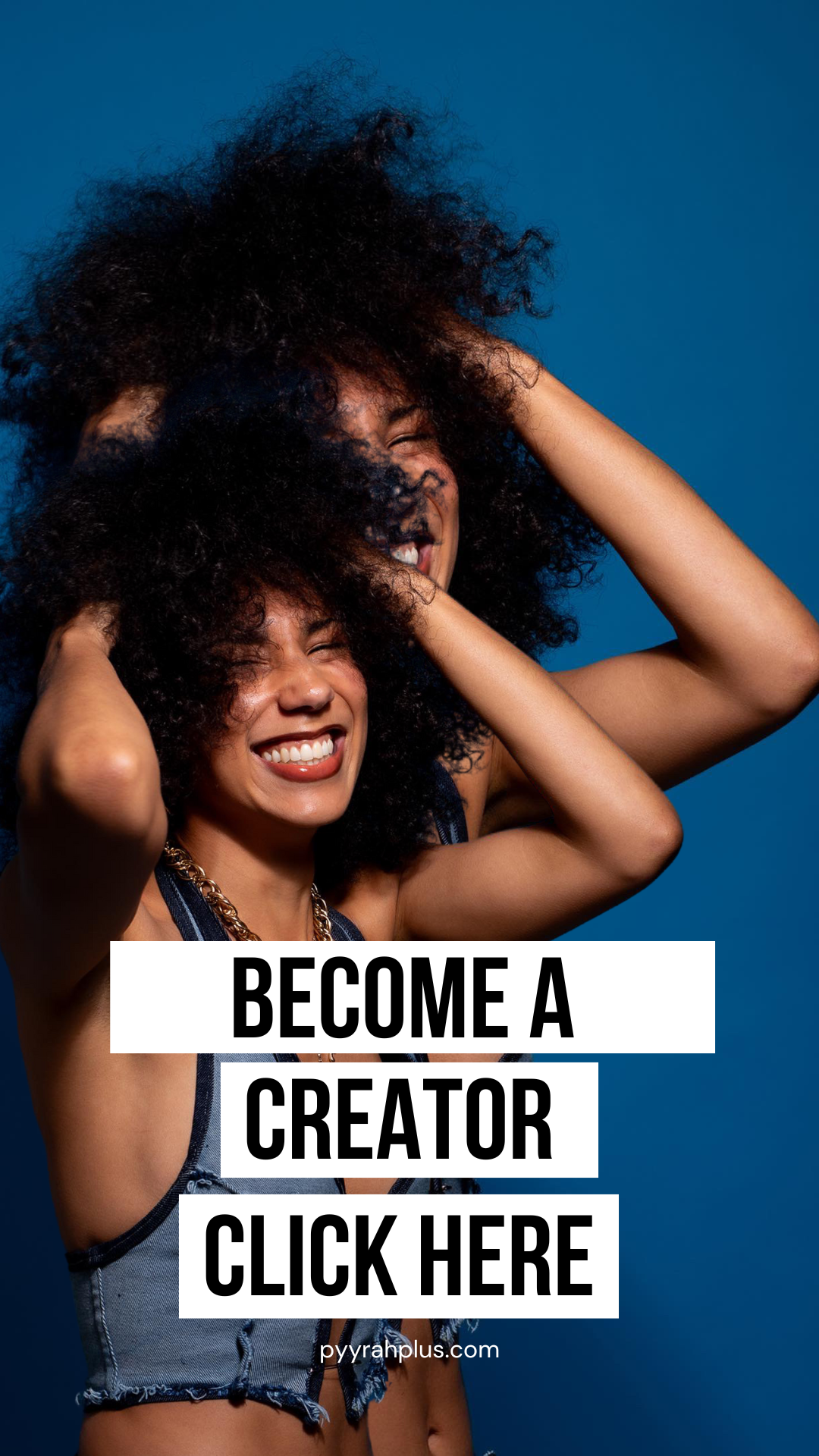Sarah Funk’s approach to digital storytelling stands as a testament to the power of authentic voice in content creation. Her journey through New York City’s vibrant streets and hidden corners has transformed into something far more significant than mere documentation—it has become a masterclass in multi-platform storytelling that resonates across generations and cultures.

The landscape of digital content creation has evolved dramatically since the early days of travel blogging, when lengthy posts and filtered photos were the currency of choice. Today’s content creators face an increasingly sophisticated audience that craves authenticity above all else. It’s within this context that Funk’s work becomes particularly noteworthy—her content strategy seamlessly adapts to each platform’s unique requirements while maintaining a consistent through-line of genuine enthusiasm for urban exploration.
Consider the challenge of capturing New York’s essence across different mediums: YouTube’s long-form format demands detailed narratives and comprehensive guides, while TikTok requires distilling the same information into bite-sized moments of impact. Instagram sits somewhere in between, balancing visual appeal with informative captions. Funk’s mastery across these platforms demonstrates a keen understanding of how modern audiences consume content—they don’t just follow creators; they engage with storytellers who can adapt their voice while maintaining authenticity.
The secret to Funk’s success lies not just in her technical proficiency or platform diversity, but in her fundamental approach to content creation. “Don’t just talk about doing it, just do it,” she advises, echoing a sentiment that separates successful digital entrepreneurs from those caught in the endless cycle of planning and perfection-seeking. This philosophy manifests in content that feels immediate and genuine, whether she’s exploring a newly opened rooftop restaurant in Manhattan or uncovering a hidden speakeasy in Brooklyn.
What makes Funk’s story particularly compelling is how it intersects with the broader evolution of digital content creation. As traditional media outlets struggle to maintain relevance in the social media age, independent creators like Funk are pioneering new ways to engage with audiences. Her success demonstrates that in the digital age, authority comes not from institutional backing but from consistent delivery of value and authentic engagement with one’s audience.
The transformation from aspiring creator to digital entrepreneur isn’t just about mastering algorithms or perfecting lighting techniques—it’s about developing a distinctive voice that cuts through the digital noise. Funk’s multi-platform presence serves as a blueprint for aspiring content creators, showing how dedication to authentic storytelling can build a sustainable digital brand. Her journey reminds us that in the ever-evolving landscape of social media, the most valuable currency isn’t perfection—it’s authenticity coupled with consistent quality.
This introduction sets the stage for a deeper exploration of Funk’s specific strategies, techniques, and insights that have contributed to her success across multiple platforms. It positions her story within the larger context of digital content creation while maintaining the sophisticated yet accessible tone expected of premium editorial content.
In the ever-evolving landscape of digital media, where platform proliferation often leads to creative dilution, Sarah Funk has mastered the art of maintaining authenticity across multiple channels while crafting distinct experiences for each audience. Her approach to content creation resembles that of a master chef preparing different dishes from the same premium ingredients—each platform receives its own specially crafted presentation while maintaining the essential flavors that define her brand.
The architecture of Funk’s digital presence is particularly noteworthy in how it adapts to each platform’s unique characteristics. On YouTube, where long-form content reigns supreme, her travel guides and city explorations unfold like carefully crafted documentaries, allowing viewers to experience New York’s hidden gems through an insider’s lens. The platform’s format enables her to delve deep into the cultural tapestry of each neighborhood, from the historic brownstones of Brooklyn Heights to the evolving culinary scene in Queens.
Instagram serves as her visual portfolio, where single moments are frozen in time—a sunset casting golden light across the Manhattan skyline, or the steam rising from a cup of coffee at a beloved neighborhood café. These carefully composed snapshots work in concert with thoughtful captions to create what might be called “micro-experiences,” perfect for followers seeking both inspiration and practical guidance. The platform’s Story and Reel features allow her to share immediate, unvarnished moments that complement her more polished feed posts.
TikTok, meanwhile, represents perhaps her most dynamic adaptation. Here, Funk distills her extensive knowledge of New York City into bite-sized pieces of content that capture attention within seconds. A 60-second guide to finding the best pizza in Brooklyn, or a quick tutorial on navigating the subway system—these short-form videos demonstrate her ability to extract the essential elements of her expertise and present them in an instantly digestible format.
What makes Funk’s multi-platform approach particularly effective is her understanding that success isn’t merely about cross-posting content. Each platform demands its own strategy, its own voice, its own rhythm. As she notes, “Nothing is ever going to be perfect.” This philosophy has allowed her to experiment and evolve, finding unique ways to connect with different audiences while maintaining the core authenticity that defines her brand.
The orchestration of this digital ecosystem requires more than just technical proficiency. It demands an intuitive understanding of how different audiences consume content across platforms. For instance, her YouTube viewers might spend 20 minutes watching an in-depth neighborhood guide, while her TikTok followers expect quick, actionable insights delivered in moments. This understanding shapes not just the content itself, but the entire strategy behind its creation and distribution.
Funk’s success across platforms demonstrates that building a digital empire isn’t about being everywhere at once—it’s about being everywhere purposefully. Her content strategy reflects a deep understanding that each platform serves a distinct purpose in her audience’s journey, from initial discovery on TikTok to deeper engagement on YouTube, with Instagram serving as a continuous thread that weaves through their daily lives.
This multi-platform mastery didn’t emerge overnight. It’s the result of consistent experimentation, careful observation, and most importantly, an unwavering commitment to authentic storytelling. In an age where digital presence often feels fragmented and superficial, Funk’s empire stands as a testament to the power of purposeful, platform-specific content creation that never loses sight of the story at its heart.
In the gleaming canyons of New York City, where countless dreams either take flight or remain forever tethered to the ground of “what if,” Sarah Funk’s philosophy rings with particular resonance: “Don’t just talk about doing it, just do it.” This deceptively simple mandate cuts through the fog of overthinking that often paralyzes aspiring content creators, offering a beacon of clarity in an increasingly complex digital landscape.
The phenomenon of analysis paralysis has become almost epidemic in the content creation space, particularly as the technical barriers to entry have lowered while psychological ones have risen. In an era where everyone seems to carry a production studio in their pocket, the hesitation rarely stems from lack of tools but rather from an overwhelming abundance of possibilities. It’s a peculiar paradox that Funk addresses head-on with her experience-tested wisdom: “There’s never a right time, it’s always going to feel like you’re not ready.”
Consider the typical journey of an aspiring creator: hours spent researching camera equipment, endless tutorials on lighting techniques, countless spreadsheets mapping out content strategies, and perpetual refinement of ideas that never see the light of day. This pattern of preparation without action reflects a fundamental misunderstanding of the creative process. As Funk emphasizes, “Nothing is ever going to be perfect.” This acknowledgment liberates creators from the crushing weight of expectation, shifting the focus from theoretical perfection to practical progression.

The implementation of a “just do it” mentality doesn’t mean abandoning thoughtfulness or preparation entirely. Rather, it suggests a more dynamic approach to learning and growth. Instead of waiting for the perfect moment or the perfect skill set, Funk advocates for learning through action. This philosophy aligns with what psychologists often refer to as “active learning”—the process of acquiring knowledge and skills through direct experience rather than passive study.
Take, for example, the common hesitation around video content creation. Many aspiring creators spend months perfecting their on-camera presence in private, never actually publishing anything. Funk’s approach would suggest starting with simple, straightforward content—perhaps a neighborhood walking tour or a quick restaurant review—and allowing natural improvement to occur through regular production and publication. The key lies in understanding that the first attempt doesn’t need to be—and indeed won’t be—the best attempt.
This approach to breaking through analysis paralysis carries particular weight coming from someone who has built a successful multi-platform presence in one of the world’s most competitive markets. New York City, with its unforgiving pace and sophisticated audience, provides little room for hesitation. Yet it’s precisely this environment that has proved Funk’s philosophy: the best way to learn how to create content is to create content.
The practical application of this mindset involves setting simple, achievable goals that prioritize action over perfection. Rather than aiming for viral success or immediate mastery, focus on consistent production and incremental improvement. This might mean committing to publishing one piece of content weekly, regardless of perceived quality, or challenging yourself to try new formats or topics without excessive preparation.
As Funk notes, “You don’t need experience to do this, you just need the drive and the passion and the determination to make it happen.” This statement encapsulates perhaps the most crucial aspect of breaking through analysis paralysis: recognizing that experience is not a prerequisite for beginning, but rather a consequence of taking action. In the end, the most sophisticated content strategy means nothing without execution, and the simplest action outweighs the most elaborate plan that never materializes.
The concept of consistency in content creation extends far beyond the simple act of posting regularly. It encompasses a sophisticated understanding of audience expectations, platform dynamics, and the delicate balance between maintaining quality standards and meeting production demands. In the travel and city-focused content sphere, where every corner of Manhattan has been photographed countless times, distinction comes not from what you capture, but how consistently you capture it with your unique perspective.
Quality benchmarks in travel and city-focused content have evolved significantly since the early days of social media. Where once a well-composed photograph might have sufficed, today’s audiences expect immersive experiences that combine visual appeal with practical value. Funk’s work demonstrates this evolution through content that consistently delivers on multiple levels—aesthetic beauty, actionable information, and authentic storytelling. Each piece, whether a YouTube video exploring a hidden speakeasy or an Instagram post highlighting a neighborhood café, maintains these quality standards while adding to a larger narrative about New York City life.
The timeline for building a sustainable content business through consistent quality production follows a pattern that might be familiar to anyone who has watched New York’s neighborhoods transform over decades. Just as a single storefront can’t change a block overnight, consistent content doesn’t immediately transform into a thriving business. Industry analyses suggest that content creators typically need 12-18 months of consistent posting to build a meaningful following, with another 6-12 months to develop reliable monetization streams.
Funk’s approach to balancing quantity with quality offers valuable insights for content creators at any stage. Rather than sacrificing quality for frequency or vice versa, she advocates for finding a sustainable rhythm that allows for both. This might mean posting three thoroughly researched YouTube videos per month rather than rushing to produce weekly content, or maintaining a daily Instagram presence while dedicating more time to weekly flagship content.
The implementation of consistent quality requires systems and processes that might seem antithetical to creative work at first glance. However, much like a chef’s mise en place ensures smooth service during dinner rush, having established workflows and quality checkpoints enables creators to maintain standards without becoming overwhelmed. This might include content calendars that plan three months ahead, batch filming sessions that maximize productivity while maintaining freshness, and regular content audits to ensure alignment with quality benchmarks.
What sets apart truly successful content creators is their ability to maintain quality standards even during periods of rapid growth or increased demand. This requires developing what might be called a “quality muscle memory”—an intuitive understanding of your standards that becomes second nature through consistent practice. Funk’s work demonstrates this through its reliable excellence; whether you’re watching content from last week or last year, the commitment to quality remains evident.
The power of consistent quality content lies not just in its ability to attract and retain audiences, but in its capacity to build sustainable, long-term success in the digital space. Like the iconic institutions that define New York’s cultural landscape, enduring digital presence is built not through viral moments but through persistent, reliable excellence that audiences come to trust and expect.
In the intricate ecosystem of digital content creation, monetization represents not merely a financial goal but the transformation of creative passion into sustainable enterprise. Sarah Funk’s directive to “monetize as soon as you can” cuts through the romantic notion that creators should focus solely on art before commerce. Instead, it acknowledges a fundamental truth: sustainable creativity requires sustainable economics.
The landscape of content monetization has evolved dramatically from the early days of digital media, when advertising revenue and sponsored posts were the primary sources of income. Today’s content creators operate in an environment more akin to Renaissance patronage reimagined for the digital age—multiple revenue streams flowing from various sources, each requiring its own cultivation and care.
Early-stage monetization opportunities often begin before a creator has amassed a significant following. This might include affiliate marketing through carefully curated product recommendations, teaching online workshops that showcase expertise, or creating digital guides that provide value to even a small but dedicated audience. The key lies in understanding that monetization isn’t merely about extracting value but about creating it—each revenue stream should enhance rather than detract from the audience experience.
Platform-specific monetization requires a nuanced understanding of each channel’s unique characteristics. YouTube’s Partner Program, for instance, offers not just advertising revenue but additional streams through channel memberships and Super Chat features. Instagram’s creator marketplace facilitates brand collaborations while allowing direct product tagging in posts. TikTok’s Creator Fund provides another avenue, though savvy creators like Funk often use it as just one component of a broader monetization strategy.
The progression toward diversified revenue streams typically follows a natural evolution. Initial efforts might focus on platform-native monetization features, gradually expanding to include:
– Digital Products: City guides, photography presets, or tutorial series
– Consulting Services: One-on-one coaching or group workshops
– Brand Partnerships: Long-term relationships rather than one-off sponsorships
– Membership Programs: Exclusive content and community access
– Merchandise: Thoughtfully designed products that extend the brand
The timeline for achieving sustainable income through content varies significantly, but successful creators typically follow a pattern of progressive monetization. The first year often focuses on building authority and testing revenue streams, the second on optimizing successful channels, and the third on scaling and diversification. This progression allows creators to maintain authenticity while building financial stability.
What distinguishes sophisticated monetization strategies from mere commercialization is their integration with content strategy. When done well, monetization enhances rather than compromises content quality. A travel creator’s paid city guide, for example, should provide deeper insight and more detailed recommendations than their free content, justifying its price point through added value rather than artificial scarcity.
The sustainability of content-based income relies heavily on what might be called the trust economy. Audiences invest not just money but faith in creators who consistently deliver value. This trust, once established, creates a virtuous cycle where monetary support enables better content creation, which in turn strengthens audience loyalty and willingness to invest in premium offerings.
For emerging creators, the key lesson from successful content entrepreneurs like Funk is that monetization should be viewed as a natural extension of value creation rather than a separate endeavor. The most successful creators don’t simply make content and then try to monetize it—they create with monetization in mind, ensuring that each piece of content serves both artistic and commercial purposes without compromising either.
In the end, successful monetization in content creation mirrors the fundamental principles of any sustainable business: provide consistent value, maintain authentic relationships with your audience, and build multiple streams of revenue that support rather than detract from your core mission.

In the realm of content creation, where algorithmic changes and shifting audience preferences create constant upheaval, Sarah Funk’s observation that “growth happens at the edge of your comfort zone” resonates with particular poignancy. This isn’t merely motivational rhetoric—it’s a fundamental truth about the nature of creative evolution in the digital age, where comfort often signals stagnation rather than success.
Consider the delicate dance of content creation in New York City, where every street corner tells a thousand stories, and every sunset over Manhattan has been captured countless times. The challenge isn’t merely to document but to discover—to find new perspectives in familiar spaces, to push beyond the comfortable and convenient into territory that makes both creator and audience slightly uncomfortable in the most enlightening ways.
The concept of productive discomfort in content creation manifests in various forms. It might be the first time presenting to camera without a script, the decision to tackle controversial topics in your niche, or the choice to experiment with new formats that feel foreign and challenging. As Funk notes, when you feel nervous because “you’ve never done this before, that’s good because it means you’re growing.” This sensation of creative vertigo—the simultaneous fear and exhilaration of stepping into unknown territory—often precedes the most significant breakthroughs in a creator’s journey.
Managing creative risks in the digital space requires a sophisticated understanding of the difference between productive and destructive discomfort. Productive discomfort pushes boundaries while maintaining authenticity; destructive discomfort forces creators into spaces that compromise their values or vision. The key lies in recognizing the distinction and cultivating what might be called “strategic discomfort”—intentionally placing oneself in challenging situations that align with long-term growth objectives.
Building resilience in the digital space involves developing what psychologists call “growth mindset muscles.” This means treating each challenge not as a potential failure but as an experiment in evolution. When a video underperforms, when audience feedback challenges your assumptions, or when technical difficulties derail a carefully planned project, these moments become not setbacks but data points in a larger narrative of growth.
The practical application of embracing discomfort might look like:
– Tackling technical challenges that seem beyond current capabilities
– Engaging with audience feedback that challenges comfortable assumptions
– Experimenting with content formats that feel foreign or intimidating
– Addressing topics that require vulnerable authenticity
– Collaborating with creators who push beyond familiar territories
The beauty of this approach lies in its compounding effects. Each step into discomfort expands what Funk might call the “comfort territory,” making previously intimidating challenges feel manageable while revealing new horizons for growth. This creates a virtuous cycle where discomfort becomes not an obstacle to avoid but a compass pointing toward opportunity.
In the hyper-competitive landscape of digital content creation, where algorithms favor novelty and audiences crave authenticity, the ability to embrace discomfort becomes not just an advantage but a necessity. As Funk demonstrates through her own evolution, the most compelling content often emerges not from safe harbors but from ventures into uncharted waters.
The path to mastery in content creation, then, might be better understood not as a linear progression but as a series of expanding circles, each pushing slightly beyond the boundaries of the last. In this context, discomfort becomes not just a side effect of growth but its most reliable indicator—a signal that you’re moving in the right direction, even when (or perhaps especially when) the destination isn’t entirely clear.
In an era where content creation often feels like a numbers game—a relentless chase for likes, shares, and algorithmic approval—Sarah Funk’s journey offers a refreshingly human narrative about the power of authentic storytelling and determined action. Her evolution from aspiring creator to digital entrepreneur illuminates a path that emphasizes substance over shortcuts, passion over perfection, and consistent growth over viral moments.
The essence of Funk’s success lies not in any secret formula or proprietary technique, but in the elegant simplicity of her core philosophy: “Don’t just talk about doing it, just do it.” This approach, reminiscent of the Nike slogan that defined a generation of athletes, applies with equal force to the digital arena. In a landscape where analysis paralysis claims countless creative aspirations, Funk’s emphasis on action over endless preparation stands as a beacon for aspiring creators.
Perhaps most compelling is her assertion that “you don’t need experience to do this, you just need the drive and the passion and the determination to make it happen.” This democratization of content creation challenges the notion that success in the digital space requires predetermined expertise or credentials. Instead, it suggests that the most valuable experience is that which comes from doing—from taking those first uncertain steps into content creation and learning through active engagement rather than passive preparation.
The practical implications of Funk’s journey extend beyond mere inspiration. Her multi-platform success demonstrates the importance of adaptability in the modern digital landscape. By maintaining authenticity across YouTube, Instagram, and TikTok while adapting her content strategy for each platform’s unique characteristics, she provides a masterclass in digital versatility. This approach—being everywhere purposefully rather than everywhere haphazardly—offers a sophisticated template for aspiring creators.
Moreover, her emphasis on embracing discomfort as a catalyst for growth challenges the common perception of success as a linear progression. In Funk’s framework, moments of uncertainty and nervousness aren’t obstacles to overcome but indicators of imminent evolution. This perspective transforms the creative journey from a destination to be reached into a continuous process of growth and refinement.
As the digital content landscape continues to evolve, with new platforms emerging and audience preferences shifting, the fundamental principles exemplified by Funk’s journey remain constant: authenticity in voice, consistency in action, and courage in the face of uncertainty. For aspiring creators, her story serves not just as inspiration but as a practical blueprint for navigating the complex intersection of creativity, technology, and entrepreneurship.

In the end, Sarah Funk’s legacy in the digital space may not be measured merely in followers or engagement metrics, but in the creators she inspires to move beyond preparation into action, beyond perfection into authenticity, and beyond comfort into growth. Her journey reminds us that in the digital age, the most powerful stories are often told not by those who wait for perfect conditions, but by those who dare to begin, persist, and evolve in full view of their audience.


